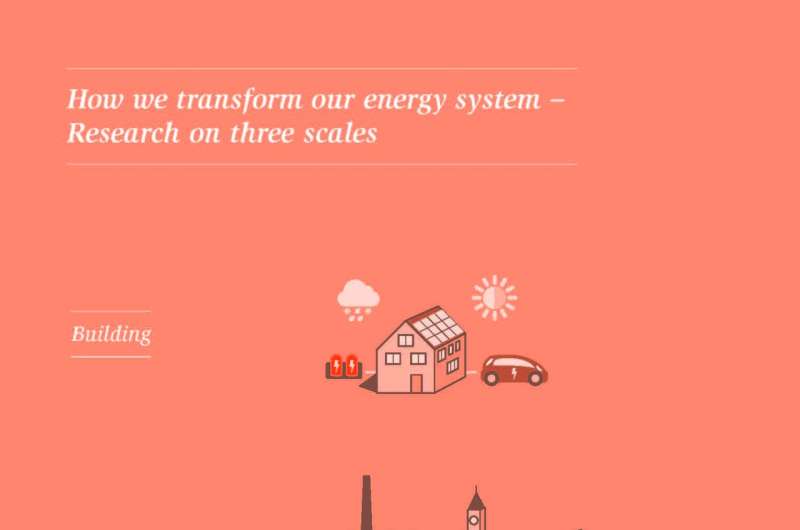Energy renovation: First sort, then refurbish

Heating and cooling of buildings is a major contributor to CO2 emissions in all industrialized countries. To achieve the Swiss government's climate targets—net zero by 2050—Switzerland's building stock must thus also make a significant contribution. But planners and decision-makers need a handout to introduce the appropriate measures in the most meaningful order. In 2019, Kristina Orehounig and her team undertook such a sorting.
Archetypes of all houses in Switzerland
There are around 1.8 million residential buildings in Switzerland. Modeling the renovation needs for each house individually would require a huge amount of computation. So Orehounig and her team resorted to data mining. They searched national databases and sorted the buildings into 50 different archetypes, sorted by year of construction, heating type and number of occupants. The result: The majority of the Swiss buildings were built between 1949 and 1994, and 77 percent of these buildings are heated electrically, with oil or gas. This shows that there is considerable potential for renovation.
The researchers performed the same allocation for commercial buildings, sorting them into 45 different archetypes based on databases—restaurants, schools, hospitals, offices and stores, each subdivided by size and year of construction.
Since solar energy represents an essential basis for the energy supply of the future, all archetypes were assessed for their suitability for photovoltaics. This was done using climate data for the region, in which the building is located, as well as roof geometry data from the Federal Office of Topography (Swisstopo), which provided information about the size and slope of the roof surface.
City and country
The selection of the appropriate energy retrofit method also depends on the building density: Houses in the city can be efficiently connected to a heating network—in contrast, for widely spaced buildings in the countryside, a heating network often does not make sense. Hence, the Swiss building stock must also be sorted by urban and rural areas.
The researchers divided the entire Swiss land area into tiles of one square kilometer in size; tiles without houses were ignored. The rest was sorted again using public databases—depending on the amount of living space located on each tile, as well as other characteristics. The result is twelve Swiss neighborhood archetypes: four urban, four suburban, and four rural archetypes that describe the distribution of buildings in Switzerland.
How to renovate effectively
After all the sorting, renovation measures could be calculated for the individual archetypes. The researcher's conclusion: It is worthwhile to tackle the renovation of roofs and the replacement of windows in older houses with the highest priority. This alone can reduce the demand for heating and cooling energy by 20 to 30 percent.
The next step should be to renovate the heating systems in almost all types of houses—apartment buildings, schools and office buildings can often be renovated more cost-effectively than detached single-family houses. Why? In larger buildings, renovation of the heating system affects many square meters of occupied space at the same time. Any technical intervention is therefore more (cost-)effective.
Networking and planning storage
As the energy system is transformed, the planning and operation of buildings and neighborhoods is becoming increasingly complex. Solar energy is generated primarily in the summer at midday, but is expected to be consumed throughout the day, perhaps even in the fall and winter. So new energy storage systems for hours or days, as well as long-term storage for months, is needed to meet energy demand at all times. Empa is investigating battery storage for electricity and various heat storage technologies as well as the conversion of solar power into fuels to meet this challenge. The storage of sustainably generated energy should not only happen on a national level, but also on a building or neighborhood level. At the same time, fossil heating systems, such as gas boilers, must be replaced as fast as possible with new and sustainable systems—such as hydrogen fuel cells, a district heating connection, or heat pumps fed by renewable electricity. The whole transformation should also be balanced according to social and economic criteria. All these decisions need a scientifically sound basis. The researchers who calculate energy models will not run out of work any time soon.
Saving greenhouse gases
It is important to replace fossil fuels as fast as possible—with photovoltaics on the roof and on facades. Heat can then be generated, for example, by air-source heat pumps powered by the building's own solar electricity or other renewable energy sources. Biomass heating systems—biogas or wood pellets—also effectively reduce CO2 emissions.
At the end of the analysis, Kristina Orehounig is hopeful: "If the proposed measures are taken, greenhouse gas emissions caused by Switzerland's building stock can be reduced by 60 to 80 percent."


















